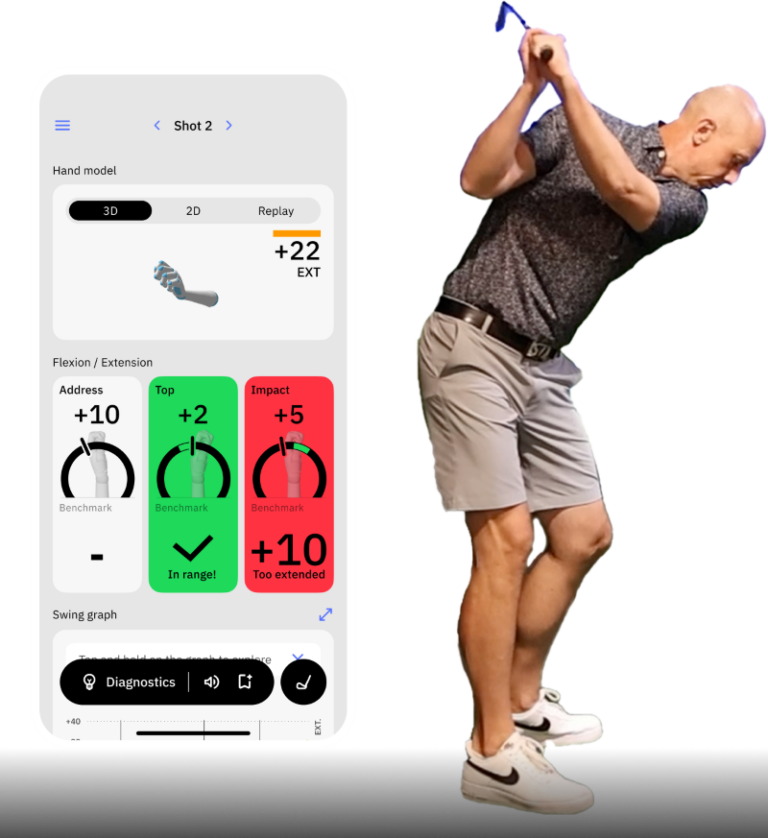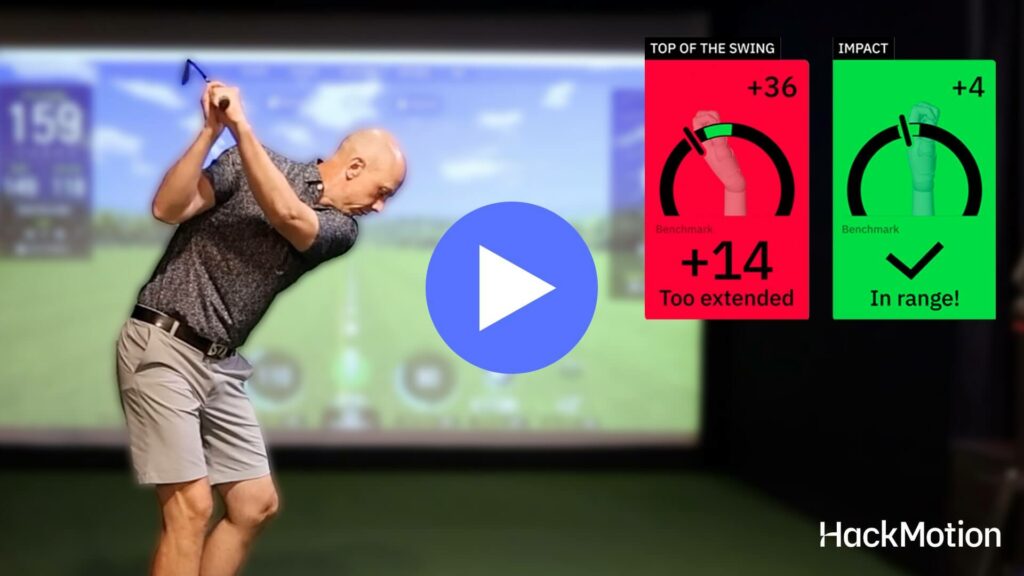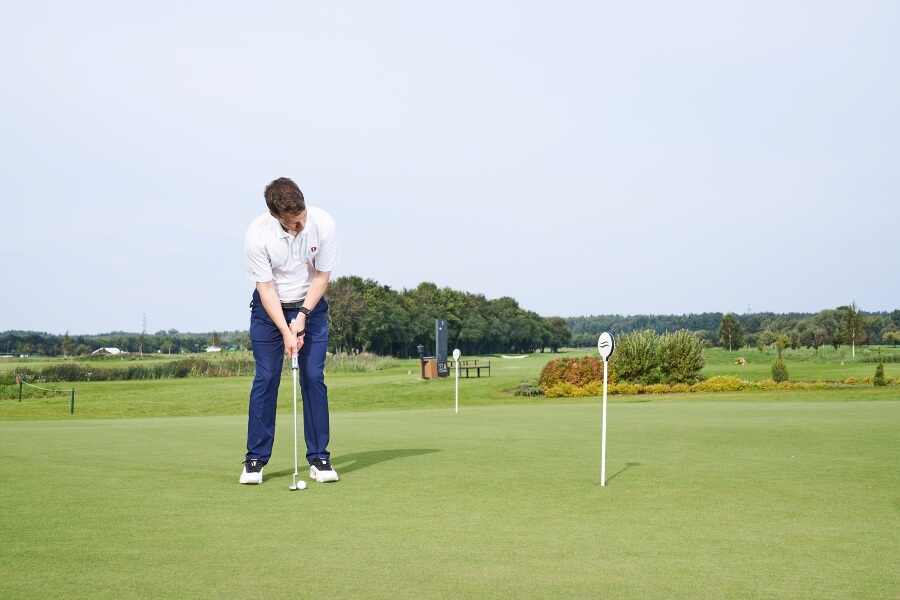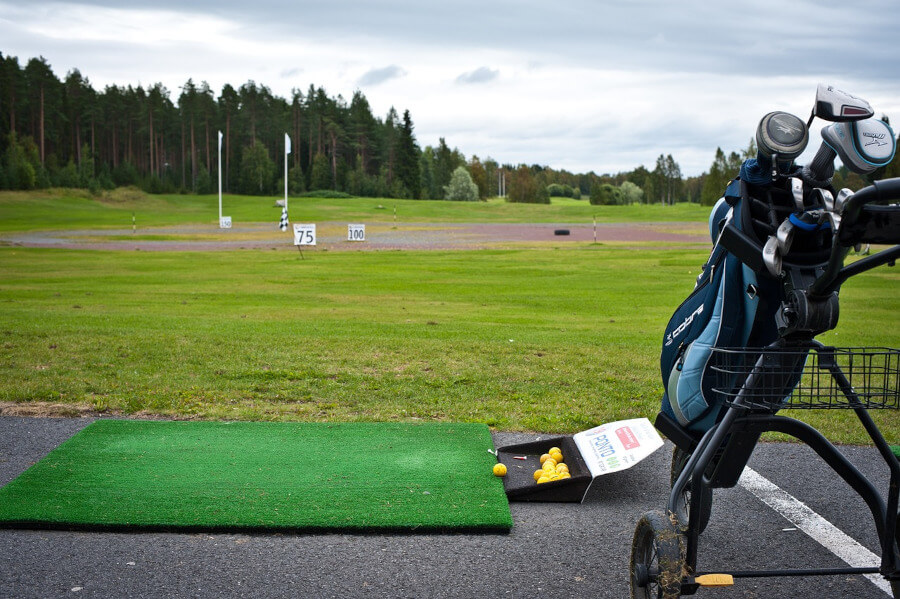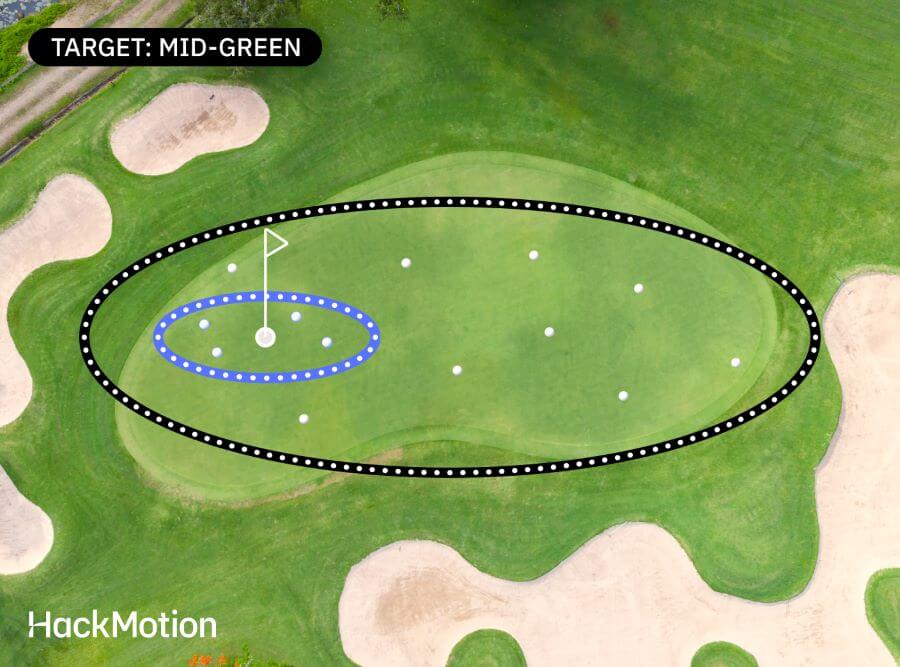How to Play Smarter Golf: Proven Strategies & Tips to Lower Your Score (No Swing Change Needed)
Golf is more than just a driver swing or a putting stroke; the best golfers always have a plan and stick to it.
It is possible to lower your scores without changing your swing, but it still requires some homework and a change in your mental approach.
Since golf is so complex, many amateur golfers focus on more understandable things, such as swing mechanics. But if you embrace the complexity and develop a strategy and mental game that you can be proud of, then no course and no shot will ever intimidate you.
Use the tips below to learn more about how you can improve without changing your swing.
This guide addresses all aspects of your game and includes some special drills that will train your mental game more than your physical game.
Play Smarter Golf (Key Takeaways)
Reading this comprehensive guide in its entirety will yield the best results, but if you’re just looking for a quick hit of accurate information to improve your game, review these key takeaways.
- Warm up your body and muscles before even getting to the golf course.
- Study the course you are about to play and develop an achievable game plan based on your skills.
- Always use a consistent pre-shot routine.
- Utilize and embrace your natural shot shape and tendencies.
- Define your risk tolerance ahead of time and stick to your plan.
- Use advanced technology like Hackmotion to help track and focus your practice sessions.
- Perform drills that improve your ability to handle pressure and deal with stress.
Contents
How to Play Smarter Golf: Strategy, Course Management, and On-Course Decisions
Always Warm Up
Your muscles will respond better with some light stretching before each round. Spending 15 mins at home just before you leave will make a huge difference and allow you to warm up quicker.
Here are some easy stretches that will address the most important muscles you need to play better golf.
- Twisting Stretch—Start with your legs a bit wider than shoulder width and your arms stretched up. Slowly bend at the hips and with your right arm, touch your left toe. Do the same for the opposite side five times each side.
- Shoulder Flossing—Stand with your feet hip-width apart and hold a club above your head. Slowly let the club lower behind your head as far as you can go. Do this 6-8 times.
- Scarecrow Twist—Using a club again, lay it across the back of your shoulders with your hands grabbing each end. Twist from left to right ten times as far as you can.
- Seated Hip Stretch—While sitting in a chair, place your left ankle on your right knee and gently push down on your left knee to open the hip. Do this for both sides.
Pre-round Prep
After your muscles are warmed up, it’s time to do a bit of homework. Preparing for the course you’re about to play will limit surprises and ease the stress you’ll face.
This should only take about 10-15 minutes; you don’t have to go to the extent that PGA Tour players go to.
Even if you’ve played the course before, you should still implement the following steps. Going through the process with a course you’re familiar with will make it easier when you need to study a course you’ve never seen in person.
- Examine each hole to identify major trouble spots, safe angles to approach greens, and fat parts/accessible sections of each green.
- Know your yardages for the front, middle, and back of the greens. There may also be some key carry distances from tee to fairway or over water hazards.
- Create a loose plan for each hole where you will decide your tee club and estimate your approach club.
- Manage expectations about scores and plan for a few bogeys. If you do this, you will avoid frustration, but don’t let it affect you if your play does not match your plan. That’s golf.
A Decision Framework For Your Pre-Shot Routine
A proper pre-shot routine will do wonders for your game and be a huge help when trying to lower your scores. It will help you stick to your game plan and prepare your mind for each shot, no matter the challenge or conditions.
When developing a pre-shot routine, write it down and bring it with you until you memorize your system. You can make changes the first few times, but once you decide on a process. Stick with it for a few months before making any more changes.
Always include the following considerations in your pre-shot routine to determine yardage, club, and swing choice.
- Assess the lie and your ability to get the club on the back of the ball without intervention.
- Estimate the wind’s effect.
- Determine elevation.
- Consider the carry distance compared to the rollout needed or allowed.
- Judge any uneven lie that may be present (ball above or below feet, or sidehill).
- Choose a shot trajectory based on the 50/100 rule (choose a shot you can successfully execute 50% of the time with 100% confidence).
If you want personalized guidance for smarter on-course decisions, connect with golf instructors near you who can help you build a reliable strategy.
Putting Smarter
The best putters in the world focus most of their efforts on getting good speed. Worry less about the line of your putt unless it’s a drastic break one way or the other.
For the majority of your putts, you can play smarter and reduce three-putts with great distance control.
Once you are comfortable with the weight of a putt, read the break from the low side of the hole and then from behind the hole.
This is especially important for putts 15 feet and over. The last three to five feet are the most important, so you’ll always want to get a close look at that section.
Play to Your Patterns
Don’t fight your swing, embrace it. If you typically hit a fade with your driver, then use it to your advantage.
Knowing where your ball will go will help you lower your scores more than being able to hit all the shots in the world.
Hitting a predictable fade or draw will also eliminate half of the golf course. If you’re always playing down the right side of a hole, then you’ll never have to worry about trouble on the left.
Of course, if the trouble is on the right, then you’ll just have to address that in your pre-shot routine and plan for it by aiming more left, going over it, or laying up short.
To complement your predominant shot, always try to play to comfortable yardages. If you are good with your 8-iron from 145 yards, then always try to get there off the tee.
Risk Management
- Bogey is fine—You can come back from a bogey, it’s double bogeys that kill scorecards. When you find yourself in trouble, don’t try to be the hero, pitch out of trouble and secure a bogey rather than compounding your error.
- Fat part of the green—For all intents and purposes, never aim for the flag; aim for the easiest section of the green to access. If the pin is there, then great, but be honest about that. A great way to practice this is to ask the group ahead of you to leave the pin out after they are done. This will train you to approach greens in the safest way possible.
- Avoid short-siding yourself—Choosing the correct shot also means identifying where you DON’T want to be. If missing left puts you in jail, then choose a target that is safely on the right side, not just a little right. Short-siding yourself is like incurring a penalty stroke, so treat scenarios like this as if they are hazards.
- Calculated risk—Playing conservatively doesn’t mean always playing safe. You can go for the green on that short par 4 or try to hit a par 5 in two, as long as the risk is not too great.
Use Data and Tech
There are many options these days to utilize technology to lower your score. When it comes to your swing, there are various shot tracking systems, but most of them are expensive.
The best piece of technology on the market today is Hackmotion.

It helps you track your practice sessions so you can adjust your routine to always address areas of your game that need the most work. Hackmotion makes personalized suggestions based on your results and covers all aspects of your game, from putting to driving.
The delicate sensors and accompanying app act as a professional coach who is always at your side, however, at a fraction of the price.
All levels of golfers will benefit from this groundbreaking product, and since it measures and tracks your movements, you will be able to keep growing, keep improving, and keep lowering your scores.
Rules and Etiquette That Help
Golf has a lot of rules, which can be intimidating at times. But instead of ignoring them or making them up amongst your foursome, grab a rule book and get in the habit of looking up the proper rules. This will especially help those who want to play in tournaments of any kind.
Knowing the rules will only help you and can lower your scores by being able to follow them to your advantage. If you know all your options for hazards, drop areas, free relief, moveable obstructions, etc., then you can take advantage.
Get a rulebook or download a digital version, and if you don’t have time to look up a rule on the course, play two balls that represent two interpretations of the rule and look it up in the clubhouse after your round.
Common Mistakes to Avoid
- Pin hunting with mid/long irons
- Forcing recovery heroics from trees
- Under-clubbing and ignoring wind/elevation
- Changing aim without accounting for the shot pattern
- Practicing block drills only
Adjust by Skill Level
As you improve, you’ll have to adjust your practice routines, game plans, and shot selections. Use the guide below to help you develop a broad game plan for the level that you are currently at, and what to prepare for at the next level.
- Higher handicap—Prioritize keeping the ball in play, center-green targets, reliable chipping method.
- Mid handicap—Edge proximity and lag putting, smarter layups to favorite numbers.
- Low handicap—Dispersion-based aiming, par-5 scoring, short-side avoidance, wind control.
Practice That Transfers
Drills for the driving range don’t always have to invite swing changes. Here are a few drills that will help you develop a stronger scoring game with the swing you have now.
Practicing handling pressure and dealing with nerves is very important when playing for score. You can use these drills to increase your golf IQ and strengthen your mental game.
Play an Imaginary Round
Apply some pressure to your practice sessions by replicating either a course you’ve played or one you are going to play. This drill will help you develop your pre-shot routine on full swing shots.
You won’t play too many short game shots with this drill, but it will help you stand on the tee and face approach shots with more confidence.
Play an Imaginary Round
- Choose a course you are familiar with and can visualize easily.
- Utilize targets on the range or on the horizon to imagine exact holes.
- Go through your entire pre-shot routine and address each shot as if you were on the course.
- Follow up each shot by attempting the next one based on the results of your first.
- For example, if you’re imagining the first hole at your home course, which is a dog leg left, and you accidentally hit your shot to the right, then your next shot should be from that estimated longer distance than if you hit the perfect tee shot.
Par 18 Game
Practice your chipping and putting with this one drill. Many amateurs lose shots with these delicate plays around the green.
Implementing this drill helps you improve your shot-making while dealing with pressure. The best part is you can do this drill with a friend as well to really amp up the tension.
Par 18 Game
- Choose a lie that is within five yards of the practice green.
- Go through your entire pre-shot routine and hit your chip to a predetermined hole.
- Grab your putter and continue with your game plan and pre-shot routine until you’ve holed the ball.
- Record your score and select another hole.
- Continue this pattern until you’ve completed 18 holes and note how many you got up and down. That is your true score.
Ladder Drill
Get your putting dialed in with this drill that focuses solely on weight.
You don’t need to address any stroke mechanics or even alignment or green reading; you’ll only be successful with this drill if your distance control is accurate.
- Video Timestamp: 0:17 – 5:45
Ladder Drill
- Lay down an alignment stick or club parallel to your line of putt about 15 feet away.
- Lay a second alignment stick down parallel to the first about five feet beyond (20 feet away from you).
- Line up your putt so it’s just to the side of the alignment sticks, and make your first putt so it passes the first stick but stays short of the second.
- Hit your second putt so it passes your first putt but still stays short of the second alignment stick.
- Hit your third putt so it passes your second putt but still stays short of the second alignment stick.
- Continue this pattern until you hit a putt that either comes up short of your previous putt or passes the second alignment stick.
- However many putts you can make in this sequence is your score.
Final Thoughts
Improving your golf game doesn’t have to be all about swing mechanics. Golf is a very complex and intricate sport, and those who are students of the entire game will see their scores drop the more they learn.
Using a system like HackMotion can help you with both strategy and mechanics. The advanced technology will learn how you swing and make personalized suggestions while you’re on the practice tee.
You don’t have to tackle the difficult game of golf all by yourself. HackMotion was invented for all levels of golfers and will continue to grow with you as you learn more and lower your scores without having to overhaul your swing.
